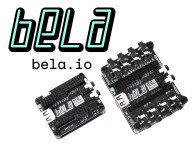
The ability for developers to create sophisticated, computationally intensive embedded control algorithms is crucial for achieving superior operational efficiency in many applications, from motor control, power supply, and charging, all the way to managing sophisticated adaptive DSP with sensor fusion. Built around a 32-bit Central Processing Unit (CPU) architecture with a 200 MHz operating speed, the dsPIC33A family's advanced core includes a Double-Precision Floating-Point Unit (DP FPU) and DSP instructions for numerically intensive tasks in many closed-loop control algorithms. The dsPIC33A architecture offers high-performance and precise real-time control coupled with a comprehensive development tool ecosystem to streamline and accelerate the design process.
"The dsPIC33A DSCs are a game-changer for developers because they are designed to offer the precision, efficiency and advanced features needed to push the boundaries of embedded system performance," says Joe Thomsen, vice president of Microchip's digital signal controller business unit. "With its ability to enable complex designs, address safety and security requirements, integrate advanced functionality and accelerate time-to-market, the dsPIC33A family positions our clients to secure a larger market share with innovative, competitive designs."
The dsPIC33A DSCs are enhanced with improved math and data processing, higher code efficiency, faster context switching and reduced latency. This lower latency allows for a faster response time to transient and safety-critical events. New and upgraded peripherals are designed to support progressive technology development in various markets including automotive, industrial, consumer, E-Mobility, data center and sustainable solutions segments.
The dsPIC33A family features integrated analog peripherals, including 12-bit ADCs capable of conversion rates up to 40 Msps, high-speed comparators and operational amplifiers. These analog peripherals, in conjunction with Core Independent Peripherals (CIPs), allow for sophisticated sensing and high-performance control. In addition, the CIPs enable interaction among the peripherals without the need for CPU involvement, enhancing the efficiency of a single controller to manage multiple tasks. The result is more robust real-time control while reserving the CPU bandwidth for software stacks, functional safety diagnostics and security functions.
The dsPIC33A device families are outfitted with Flash security capabilities, including an Immutable Root of Trust, secure debugging and restricted memory access. The DSCs’ Instruction Set Architecture (ISA) enables the adoption of software code generated by model-based designs to simplify code generation. The combined features make dsPIC33A DSCs well suited for sensor interfacing applications for automotive and consumer applications.

For development, the dsPIC33A family is supported by the MPLAB XC-DSC Compiler, MPLAB Code Configurator (MCC) and the dsPIC33A Curiosity Development Board (EV74H48A). The dsPIC33A Curiosity Development Board supports feature expansion by providing mikroBUS and Xplained Pro interfaces that enable connection to Built-in Self Text Xplained Pro (BIST XPRO) extension kits, sensors and various Click boards. Separate dual In-line modules are available to support development for general-purpose embedded applications.
www.microchip.com








